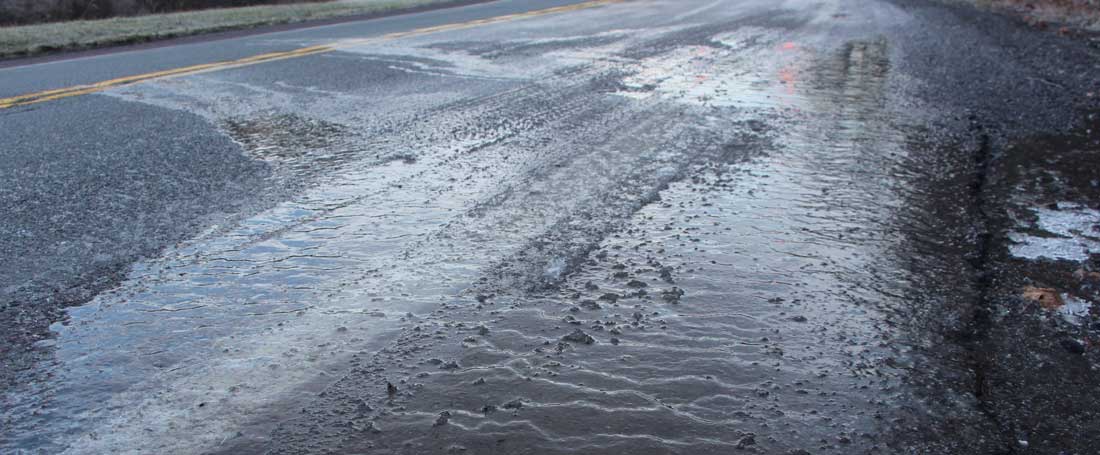Here in upstate Illinois, we are well acquainted with slippery, messy driving conditions, and that all too common wintry mix that can make driving conditions extremely dangerous. While snow always makes driving treacherous, black ice is particularly dangerous. Here’s a closer look at black ice, the dangers of black ice and some helpful tips for driving on black ice.
What is it?
It’s a very thin coating of ice that glazes on a surface and makes it very slick. While it’s not really black, it’s nearly transparent, which allows blacktops of roadways to show through, which is why it’s called “black ice.” Black ice forms on roadways when rain falls on roads that are below freezing in temperature. The refreezing of water or snow, as well as sleet, can also result in black ice.
How dangerous is it?
Black ice is dangerous because it’s extremely difficult to see it. One of the big dangers of black ice is that you’re really at it’s mercy when you drive over it, especially if you’re not prepared for it. In fact, black ice is so dangerous because it’s so hard to see, and it’s difficult to notice the ice until you lose control of the vehicle. When you drive on snow, you usually still have a bit of traction. However, when you drive on black ice, you have no traction at all, which is why you have to be extra careful driving in cold conditions.
How do you identify black ice?
It’s important to understand how, where, and when black ice forms so you’ll know if roads are icy before you begin driving on them. Black ice is more likely to develop in the late evening hours and around dawn. Black ice commonly forms on shaded areas of road, on bridges and on overpasses.
Driving tips
If you encounter black ice while you’re driving, use the following tips for driving:
Be cautious in areas where black ice commonly forms. It’s important to be cautious in areas where black ice can form, such as on bridges, overpasses, shaded areas, and roads that are infrequently traveled. Using caution in these areas can prevent a problem.
Turn, brake, and drive slowly. Make sure you keep your speed slow when driving and turning. If you need to brake, do it slowly and carefully.
Keep a safe distance between your vehicle and other vehicles. It’s important to keep a safe distance between your vehicle and other vehicles when you’re driving on snow, ice or black ice. You should increase your following distance to 8-10 seconds. This way you have a longer distance between you and the next vehicle if you need to stop.
Avoid stopping if safe and possible. Of course, if you can avoid it, try to avoid stopping. It can be difficult to start moving again if you’re on black ice, especially if you’re on a hill. Try to slow down at traffic lights so you can continue moving slowly until the light changes. When approaching a hill, try to build up some inertia so you can make it to the top.
Don’t pump the brakes if you have antilock brakes. If your vehicle has antilock brakes, you don’t need to pump the brakes. The braking system will pump the brake for you, and you should feel the pulsating vibrations from the brake pedal when the system engages. When you hit black ice, do not to lock the brakes, since it can make you lose your ability to steer, resulting in the loss of control.
Black ice is dangerous, and it’s best to avoid driving in conditions prone to freezing roadways whenever possible. However, when you have to be on the roads, keep these tips for driving on black ice in mind to reduce the risk of an accident.

